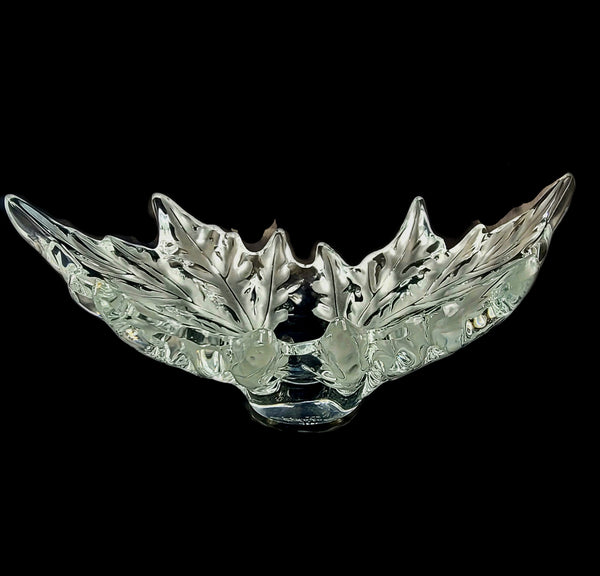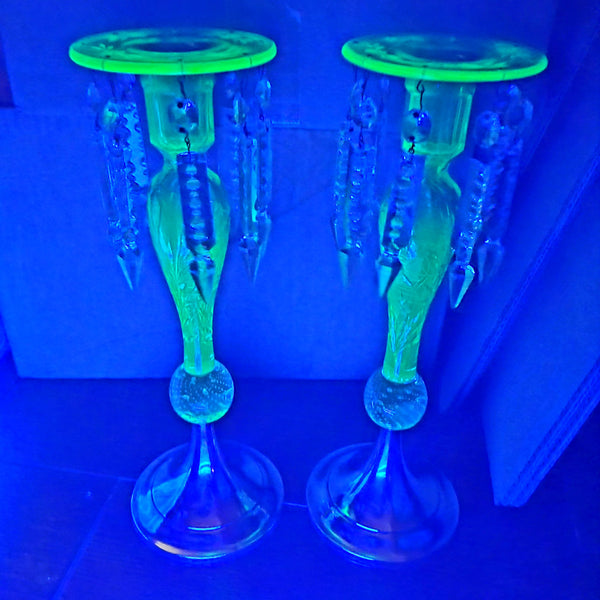How to Identify Real Murano Glass

Click here to see this fabulous duo
Video Transcription: Hi this is Jennifer with City Farmhouse Antiques and this is your first clue. This technique for this find of the week is called "millefiori" and that should give you a clue as to what the find of the week really is. These are gorgeous Murano glass birds all the way from the island of Murano, Italy where Murano glass is made. They actually moved hundreds of years ago the glass making furnaces from the mainland to the island of Murano to avoid fires. They didn't want the risk of furnace fires to be on the mainland where the fires could burn homes down. So that is where Murano glass got its name. Someone used to tell me the more you handle glass and pick up glass the more you will be able to tell just by picking up a piece of glass if it is authentic or not and that is sure true for Murano glass because it is very, very heavy and very thick and when you pick up a piece of glass automatically you can tell if you are looking at an authentic piece of Murano glass or a knock off made in China. The quality is definitely not going to be there on a piece from China and you can feel the difference. These pieces are a little lighter because they are not solid and more like bubbles. The detail on these pieces is exquisite. They are both signed and are a set done by Luigi Mellara. Another way to tell an authentic piece of Murano glass is you can see this little indentation here called a pontil. If you can imagine being in a hot furnace room and having several pounds of weight on the end of a long stick or punt and having to constantly turn it and turn it and blow it while adding cut millefiori canes which are colored cut glass canes that are added into the piece and blown into it. This is the aventurine technique where you have other metals that are blown into the glass that create these gold flecks. These are two very popular techniques used in hand blown Murano glass which is all done at the end of a several foot long stick. When the glass is removed from the stick or punt you have a pontil. Your fine pieces of glass or upper end glass will have a polished pontil like this typical of Murano glass. So if you look at a piece of glass and the weight is not there and it isn't heavy or thick and you turn it over and see a rough pontil that has not been polished down it is not going to be an authentic piece of Murano glass. You also want to always look for a signature. There you can see the Mellara signature there. This artisan trained under the famous Alfredo Barbini who is a very well known Murano art glass maker. Mellara was born in 1952 and after working for Barbini he went on to precept under Luciano Zanneti another very famous glass blower. He later opened his own studio in the 1980's. Mellara is known for his hand blown fish and finely sculpted pieces. These are absolutely exquisite at 16" tall by about 10", just this piece alone. The coloring and detail is unbelievable when you turn these around. This one has brass legs that are bolted into the bottom. I have never seen pieces like this. I have sold many sets of Murano glass birds, but these are very different. You can see the color throughout on these pieces. Can you imagine the work that went into making these? That is the sad part, I was told from a buyer that the younger generation does not want to continue the glass making trade because glass blowing is so much work. It is hot, tedious, and hard labor which makes me concerned for the future of finding these types of pieces. Murano glass may gradually become harder and harder to find. So that is our find of the week and some tips on identifying authentic Murano glass. Be sure and check us out on our website at www.cityfarmhouseantiques.com where we have more than just antiques and like us on Facebook.
Leave a comment
Comments will be approved before showing up.




